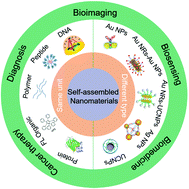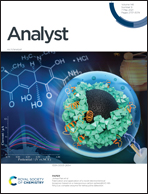Self-assembled nanomaterials for biosensing and therapeutics: recent advances and challenges
Abstract
Self-assembled nanomaterials (SANs) exhibit designable biofunctions owing to their tunable nanostructures and modifiable surface. Various constituent units and multi-dimensional structures of SANs provide unlimited possibilities for numerous applications. This review emphasizes the recent development of SANs in the fields of biosensing, bioimaging, and nano-drug engineering. The unit type, design concepts, material advantages, assembly driving force, nanostructure effects, drug loading performance, etc. are discussed and summarized. Finally, we briefly summarize how to assemble unique nanomaterials and point out the key challenges in this field.

- This article is part of the themed collections: Analyst Recent HOT articles, Celebrating 100 years of Chemistry at Nanjing University and Recent Review Articles


 Please wait while we load your content...
Please wait while we load your content...